KATHMANDU: Despite tiresome waiting since the last four and a half years, as many as 520 heritages damaged by the 2015 earthquake have remained to be renovated.
The devastating earthquake of 2015 had damaged more than 920 heritages in 31 districts of the country. Regardless of the government’s proclamation of successful reconstruction activities, heritage reconstruction seems still not in priority in the past 58 months after earthquake.
The Department of Archaeology is said to be working on the reconstruction of 737 heritages whereas various other organizations involved in the reconstruction have taken the responsibility of 183 such places.
In addition to the cultural inheritances, the devastating quake had damaged many schools, colleges, houses and public and private buildings all over the country.
Unfortunately, more than other sectors, the reconstruction of heritages seems neglected. Out of 920 heritages adversely affected by earthquake, only 400 have got the privilege of being reconstructed; 520 more are still waiting for their revival.

Out of 540 damaged heritages only 161 rejuvenated so far
Urban areas are said to be more privileged to get better attention both in the days of sorrows and the days of happiness. Urban areas really get better attention of the state. They have more skilled manpower and better resources. However, even the heritages of Kathmandu valley are unable to get proper attention in this regard.
When public regard it as the case of negligence on part of the concerned authority, the personnel in authority save their face citing the thoroughness of the works desired.
“When private houses or buildings can be made as per the individual’s design and desire, the cultural heritages have to be reconstructed or renovated in ‘as they were in original’ forms,” says Ram Bahadur Kunwar, the spokesperson of the department of Archaeology shedding light on the causes of the slackness in reconstruction and renovations of the heritages.

Out of 319 heritages damaged by earthquake in Kathmandu alone, only 99 have been reconstructed. Spokesperson Kunwar claims to have planned to finish reconstruction of 168 heritages within the current fiscal year. He says that the department will complete reconstruction of remaining 60 heritages within coming two years.
Similarly, the earthquake had impaired 123 heritages of Lalitpur district where only 30 have been reconstructed so far.
Likewise, out of 98 cultural structures of Bhaktapur only 40 have been renovated.
Thus, the statistics at the Department of Archeology shows that out of 540 various cultural heritages of Kathmandu valley, 161 heritages are only reconstructed.
Earthquake damage assessment reveals that in addition to Kathmandu valley, the cultural heritages of the neighboring Kavrepalanchok district have been affected badly. When 91 cultural inheritances were damaged by the earthquake in Kavrepalanchok, only 14 have been reconstructed in nearly 5 years of reconstruction attempts.
The progress report of other districts is not encouraging as well.
Nearly 2 billion spent to reconstruct 60%, 3 billion more still needed
According to Spokesperson Kunwar, 2.398 billion has been spent for the reconstruction till date and the government has allocated 967 million rupees as reconstruction budget for current fiscal year.
“We still need 3.62 billion for the completion of reconstruction of remaining 40%,” Kunwar said to Khabarhub.
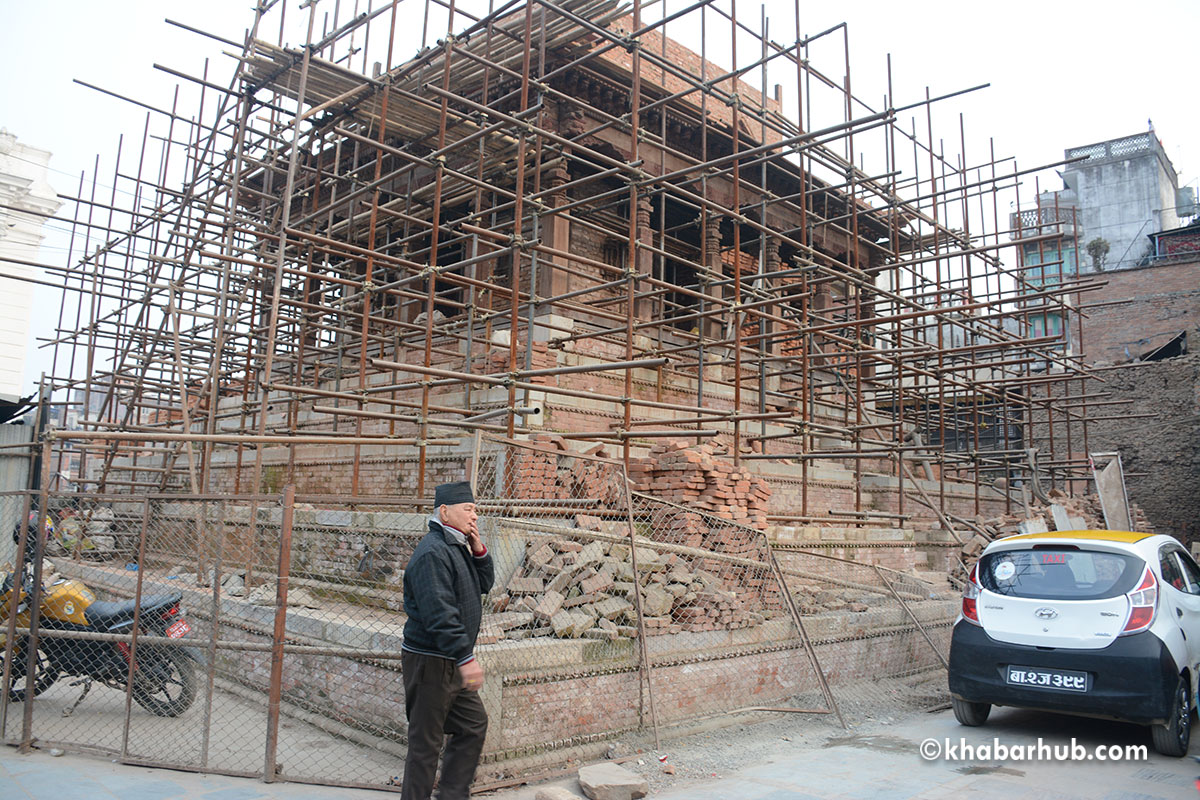
57 world heritages still waiting for reconstruction and renovation
All major world heritage sites of Kathmandu valley were adversely affected by the earthquake of 2015.
In the 7 world heritage sites of the valley, 32 in Hanumandhoka Durbar Square, 30 in Patan Durbar Square, 26 in Bhaktapur Durbar Square, 10 in Changunarayan area, 61 in Pashupati area, 18 in Swoyambhunath area and 1 in Bouddhanath area were damaged by the earthquake.
Among those 178 heritages, reconstruction of 92 structures is accomplished when the work is undergoing in 29 such places. 57 heritages are still waiting for their turn for thorough reconstruction and renovation.
Concerned at the snail-paced reconstruction activities, UNESCO’s World Heritage Site had even tried to enlist those heritages under the endangered world heritages.
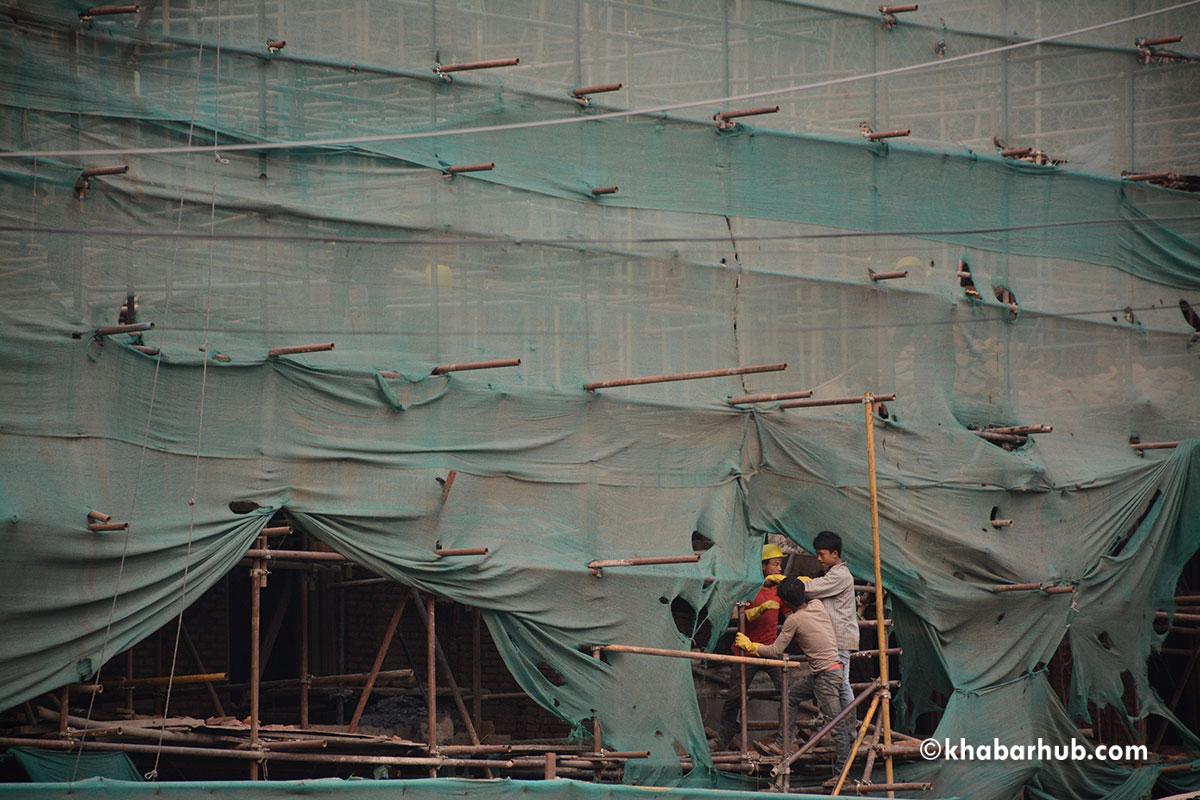
However, spokesperson Kunwar reiterated that his office had been pleading the global body not to include the World Heritage Sites of Kathmandu valley in the endangered list.
“We have been trying our best to make UNESCO clear that we are serious about preservation of world heritage sites and have sent them the list of activities done in that direction since 2015,” he further said.
Cycle-lane to connect World Heritage Sites in the valley
The government has already declared 2020 as Visit Nepal Year. It has set the target of bringing 2 million tourists in the country.
As a part of offering novelty to the tourists, the Ministry for Culture, Tourism and Civil Aviation has planned to connect the World Heritage Sites in the valley with cycle-lane.
Minister for Culture, Tourism and Civil Aviation Yogesh Bhattarai shared his plan of constructing a cycle lane to connect the World Heritage Sites in the valley.
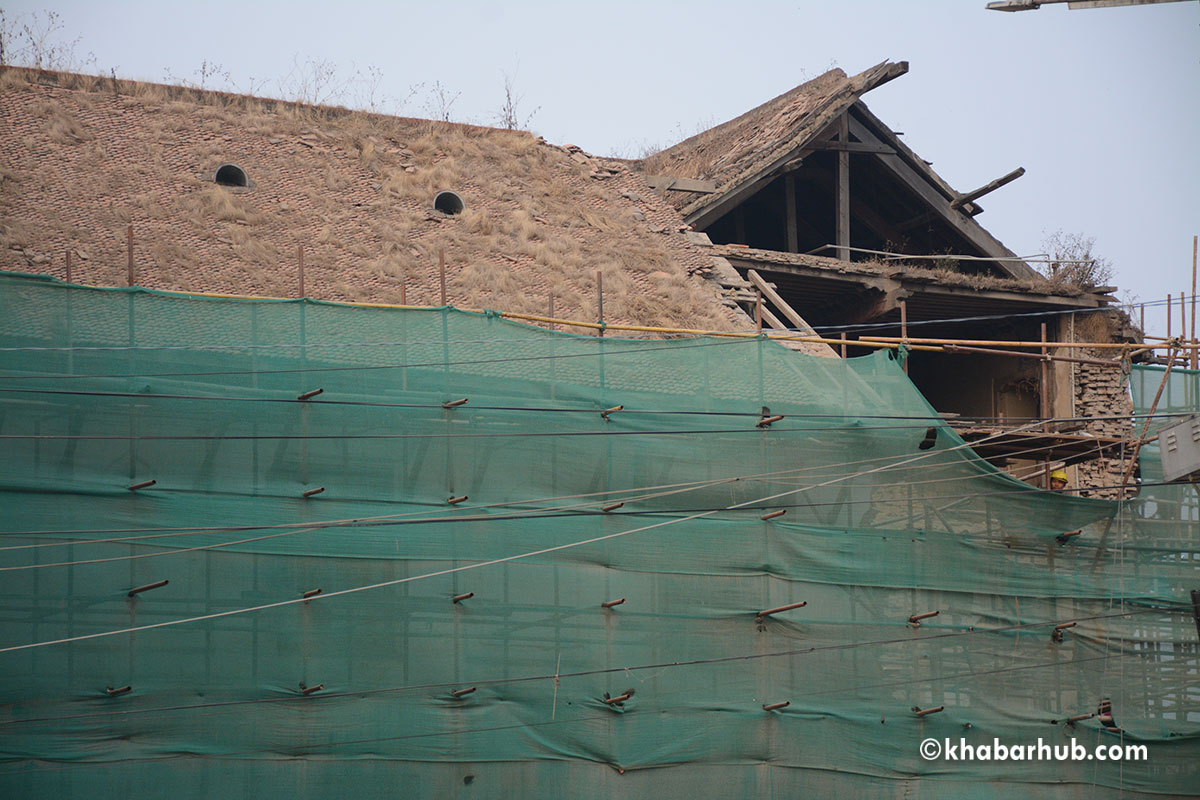
“Now the tourists aspiring to visit the World Heritage Sites of Kathmandu valley in bicycle,” Minister Bhattarai said, “We are discussing about it with the tourism entrepreneurs.”
He shared his plan to make Kathmandu ‘Cultural Valley by Night’ and develop it into a tourism city.
“The task of installing lights in Bhaktapur Durbar Square is already completed and we are working out to make all World Heritage Sites that can be visited at night as well,” Minister Bhattarai hinted at the progress made in that direction.


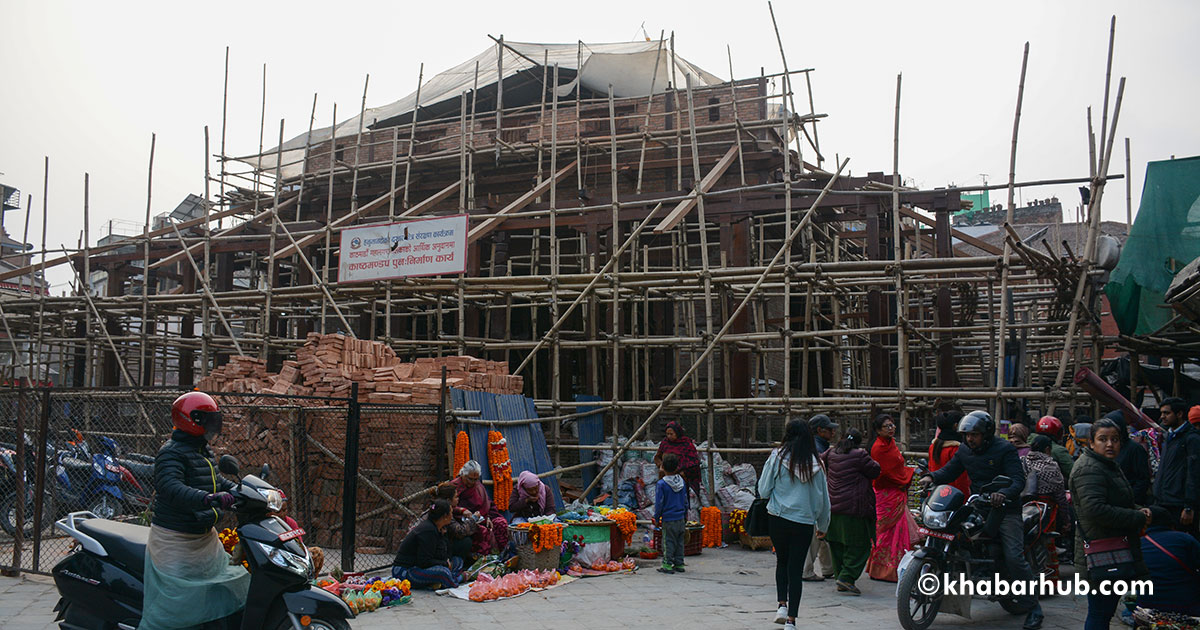
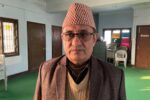

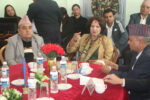
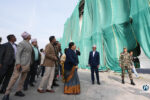


Comment